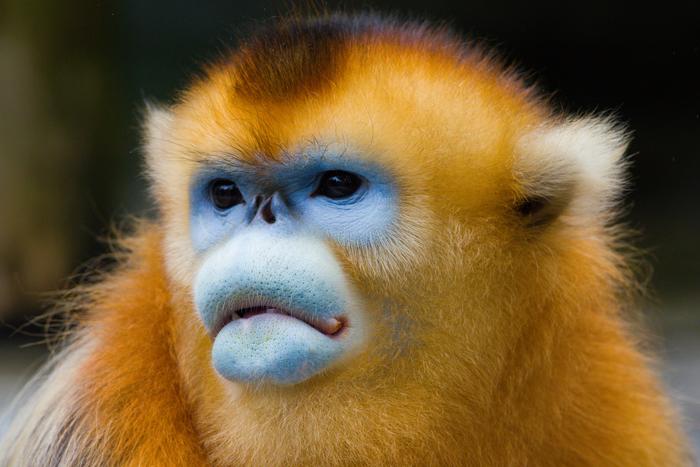Primate ornamentation plays a crucial role in communication not only within social groups but also between them, according to a new study. The research reveals that the males of species with overlapping home ranges often display vibrant colors or elaborate features, traits that may help reduce intergroup aggression by enabling quick assessments of potential rivals.

Credit: Cyril C. Grueter
Primate ornamentation plays a crucial role in communication not only within social groups but also between them, according to a new study. The research reveals that the males of species with overlapping home ranges often display vibrant colors or elaborate features, traits that may help reduce intergroup aggression by enabling quick assessments of potential rivals.
Ornaments are sexually selected traits that serve as powerful signals, often indicating an individual’s genetic quality, health or physical strength. These differences in appearance between males and females, known as dimorphic traits, are expressed in features like colorful fur or elaborate body structures. Examples include the golden snub-nosed monkey’s lip wart and blueish face, the mandrill’s vivid facial features with its red nose and blue skin, the gelada baboon’s impressive mane and red chest patch, or the proboscis monkey’s remarkably large nose.
A new study from the University of Zurich (UZH) has uncovered an intriguing link between these dimorphic traits and how primates interact with other groups. The research, conducted by Stefan Lüpold from the Department of Evolutionary Biology and Environmental Studies at UZH in collaboration with Cyril Grueter from the University of Western Australia, shows that the vibrant colors and elaborate body ornaments seen in many primate species may do more than attract mates or establish social hierarchies. These features also play an important role in communication between different social groups.
Proximity encourages richer ornamentation
The researchers analyzed data from 144 primate species, including both monkeys and apes (prosimians and anthropoids). They focused on how ornamentation relates to the overlap of home ranges, which measures how much living space groups share with their neighbors. According to Stefan Lüpold, the findings showed a clear pattern: “Species that shared more space with their neighbors had significantly greater differences in ornamentation between the sexes. In species where groups frequently interact, males are more likely to sport flashy traits that set them apart from females.”
The study also found that intergroup encounters were less likely to be aggressive in species with greater home range overlap. Encounters deemed conflict-related included behaviors such as physical confrontation, displays of strength, avoidance, displacement, vigilance and vocal warnings. This suggests that vivid physical traits might help to reduce conflict between groups, possibly by allowing them to quickly assess potential rivals from a distance.
Complex world of animal communication
“These findings challenge the common belief that primate ornamentation is only about competing for mates within groups,” says Lüpold. “Instead, they highlight the importance of considering the wider social environment in which gregarious animals exist, recognizing the significance of social interactions both within and between groups.” The study sheds new light on the evolution of primate ornamentation and provides valuable insights into the complex world of animal communication.
Journal
Evolution Letters
Method of Research
Data/statistical analysis
Subject of Research
Animals
Article Title
The role of between-group signalling in the evolution of primate ornamentation
Article Publication Date
17-Aug-2024



